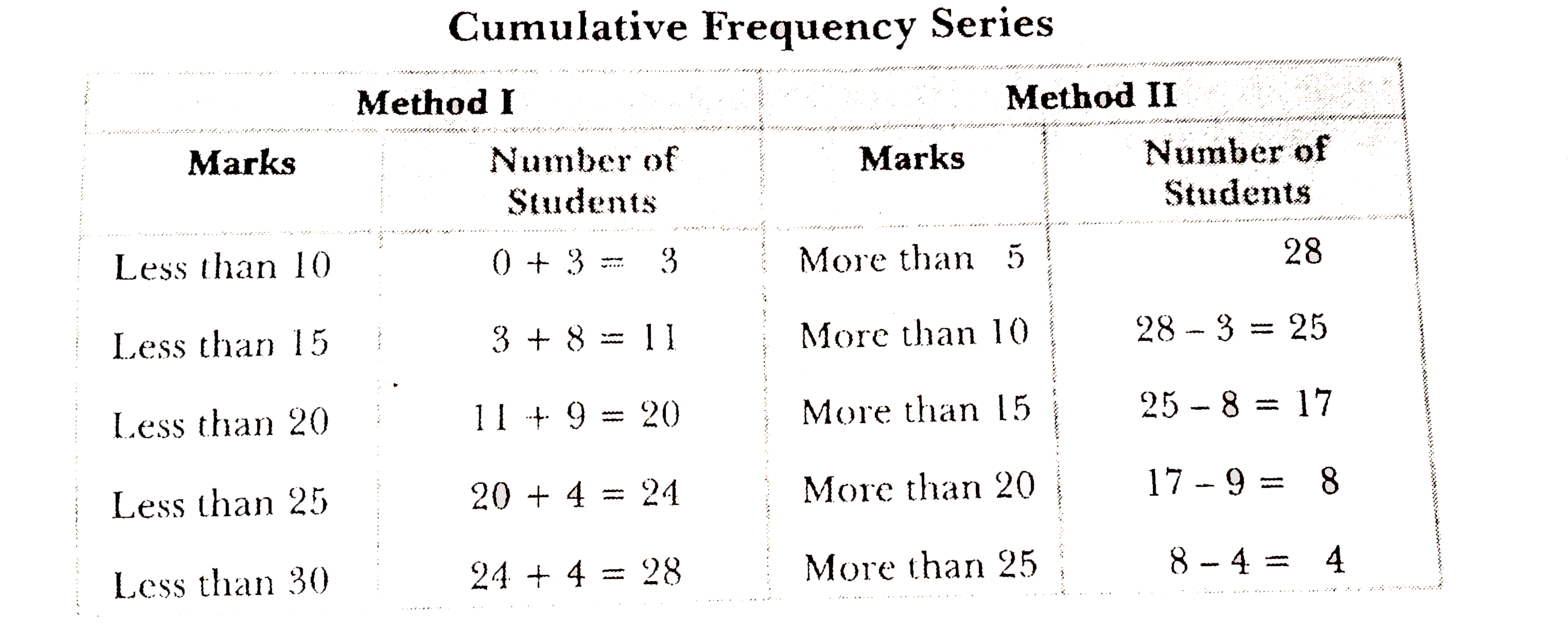Simple Frequency Series

Text Solution
There are two ways of converting this series into cumulative frequency series. These are:
(i) Cumulative frequencies may be expressed on the basis of upper limits of the class intervals, e.g., less than 10, less than 15, less than 20, when the class intervals are 5-10,10-15 and 15-20
(ii) Cumulative frequencies may be expressed on the basis of lower class limits of the class intervals, e.g., more than 5, more than 10, more than 15, when the class intervals are 5-10,10-15 and 15-20.
Thus, when a frequency distribution is to be converted into a cumulative frequency distribution, the cumulative frequencies would correspond to either the lower class limits or the upper class limits of the class intervals in a series. Accordingly, the class intervals would get converted into 'less than' or 'more than' values. Following is an example of how a frequency distribution is converted into a cumulative frequency distribution.

|
Topper's Solved these Questions
- ORGANISATION OF DATABOOK - TARUN JAIN & VK OHRICHAPTER - ORGANISATION OF DATAEXERCISE - Miscellaneous Illustration
13 Videos
- ORGANISATION OF DATABOOK - TARUN JAIN & VK OHRICHAPTER - ORGANISATION OF DATAEXERCISE - EXERCISE M.C.Q
10 Videos
- MEASURES OF DISPERSIONBOOK - TARUN JAIN & VK OHRICHAPTER - MEASURES OF DISPERSIONEXERCISE - Learning by doing
30 Videos
- PRESENTATION OF DATA - TEXTUAL AND TABULAR PRESENTATIONBOOK - TARUN JAIN & VK OHRICHAPTER - PRESENTATION OF DATA - TEXTUAL AND TABULAR PRESENTATIONEXERCISE - ESSENTIAL PRATICALS
8 Videos
Similar Questions
Knowledge Check
Let v1 be the frequency of series limit of Lyman series, v2 the frequency of the first line of Lyman series and v3 the frequency of series limit of Balmer series. Then which of the following is correct ?
Av1−v2=v3Bv2−v1=v3Cv3=12(v1+v2)Dv1+v2=v3Let v1 be the frequency of series limit of Lyman series, v2 the frequency of the first line of Lyman series and v3 the frequency of series limit of Balmer series. Then which of the following is correct ?
Av1−v2=v3Bv2−v1=v3Cv3=12(v1+v2)Dv1+v2=v3
What is meant by mid-values frequency series?
View SolutionConvert the following series into a simple frequency distribution :

View SolutionConvert the following series into a simple frequency distribution :

View SolutionA simple frequency distribution of a discrete variable is represented by what?
View SolutionDiscrete Series And Frequency Distribution Series
View SolutionThe differece is the frequency of series limit of lyman series and balmar series is equal to the frequency of the first line of the lyman series Explain
View Solution
